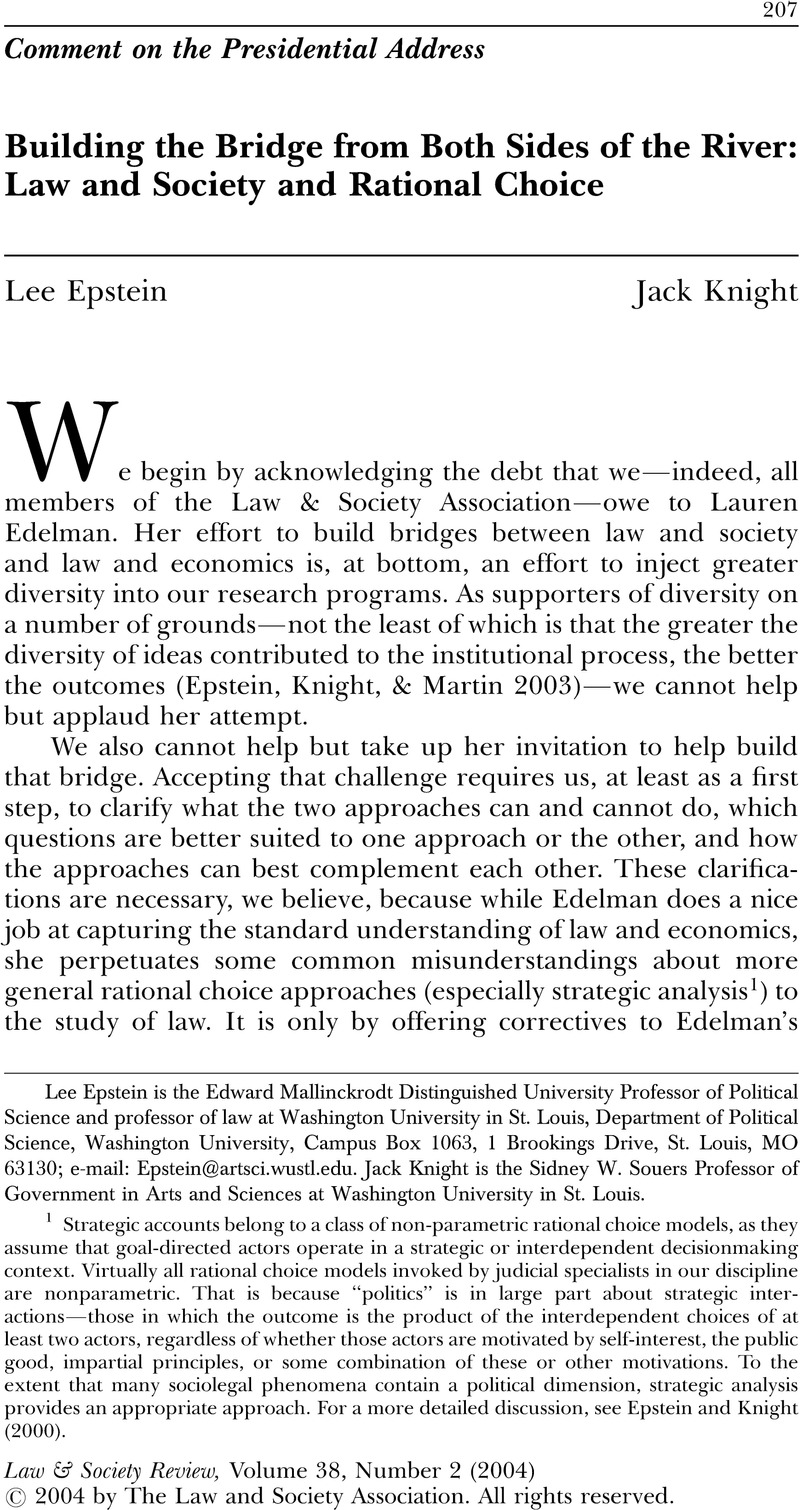Crossref Citations
This article has been cited by the following publications. This list is generated based on data provided by Crossref.
Lach, Denise
Ingram, Helen
and
Rayner, Steve
2006.
Clumsy Solutions for a Complex World.
p.
226.
Conti, Joseph A.
2008.
The Good Case: Decisions to Litigate at the World Trade Organization.
Law & Society Review,
Vol. 42,
Issue. 1,
p.
145.
Diamond, Shari Seidman
and
Mueller, Pam
2010.
Empirical Legal Scholarship in Law Reviews.
Annual Review of Law and Social Science,
Vol. 6,
Issue. 1,
p.
581.
Epstein, Lee
and
Jacobi, Tonja
2010.
The Strategic Analysis of Judicial Decisions.
Annual Review of Law and Social Science,
Vol. 6,
Issue. 1,
p.
341.
Zhang, Taisu
2020.
Beyond Information Costs: Preference Formation and the Architecture of Property Law.
Journal of Legal Analysis,
Vol. 12,
Issue. ,
p.
1.
Schlögel, Martina
and
Grottke, Michael
2024.
Handbuch Bundesverfassungsgericht im politischen System.
p.
1.
Schlögel, Martina
2024.
Handbuch Bundesverfassungsgericht im politischen System.
p.
1.
Schlögel, Martina
and
Grottke, Michael
2025.
Handbuch Bundesverfassungsgericht im politischen System.
p.
833.
Schlögel, Martina
2025.
Handbuch Bundesverfassungsgericht im politischen System.
p.
1721.



